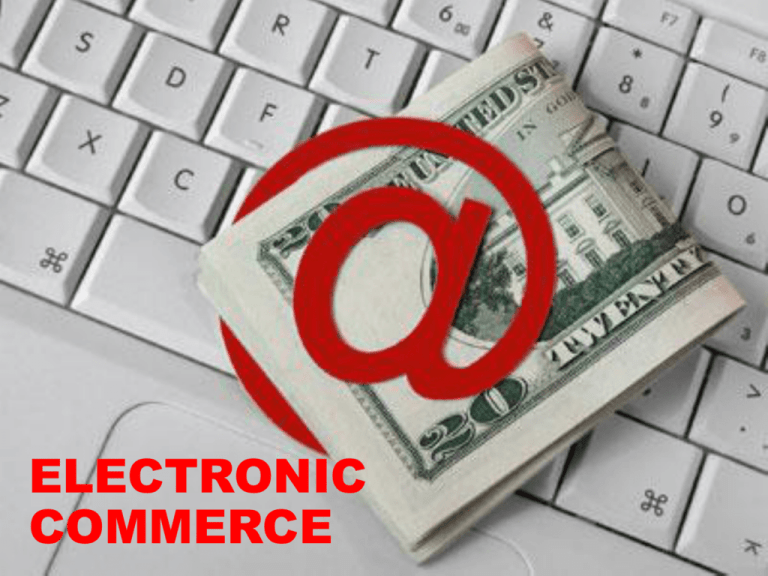ELECTRONIC COMMERCE
advertisement

ELECTRONIC COMMERCE CONTEXT: • Definition of E-Commerce. • History of E-Commerce. • Advantages and Disadvantages of E-Commerce. • Types of E-Commerce. • E-Commerce Examples. • Some of E-Commerce Websites WHAT IS E-COMMERCE? • E-commerce consists of the buying and selling of products or services over electronic systems such as the Internet and other computer networks. • Electronic commerce commonly known as e-commerce or eCommerce. • Electronic commerce was identified as the facilitation of commercial transactions electronically, using technology such as Electronic Data Interchange (EDI) and Electronic Funds Transfer (EFT). • What is EDI? • What is EFT? Electronic Data Interchange: Electronic Funds Transfer: • EDI is the structured transmission of data between organizations by electronic means. It is used to transfer electronic documents or business data from one computer system to another computer system. • EFT is the electronic exchange or transfer of money from one account to another. History of E-Commerce • The growth and acceptance of credit cards, automated teller machines (ATM) and telephone banking in the 1980s were also forms of electronic commerce. • Another form of E-Commerce was the airline reservation system, for example Sabre in the USA and Travicom in the UK. • By the end of 2000, many European and American business companies offered their services through the World Wide Web. • Since then people began to associate a word “E-Commerce" with the ability of purchasing various goods through the Internet using secure protocols and electronic payment services. Advantages of E-commerce • Faster buying/selling procedure, as well as easy to find products. • Buying/selling 24/7. • Low operational costs and better quality of services. • Easy to start and manage a business. • No need of physical company set-ups. • Customers can easily select products from different providers without moving around physically. Disadvantages of E-commerce • There is no guarantee of product quality. • There are many hackers who look for opportunities, and thus an ecommerce site, service, payment gateways, all are always prone to attack. Types of E-comerce B2B (Business-to-Business) B2C (Business-to-Consumer) C2B (Consumer-to-Business) C2C (Consumer-to-Consumer) 1) BUSINESS TO BUSINESS (B2B) • B2B can be open to all interested parties or limited to specific, pre-qualified participants (private electronic market). • Companies doing business with each other such as manufacturers selling to distributors and wholesalers selling to retailers. 2) BUSINESS TO CONSUMER (B2C) • Businesses selling to the general public typically through catalogs utilizing shopping cart software. • B2C is the indirect trade between the company and consumers. • It provides direct selling through online. • If you want to sell goods and services to customer so that anybody can purchase any products directly from supplier’s website. 3) CONSUMER TO BUSINESS (C2B) • A consumer posts his project with a set budget online and within hours companies review the consumer's requirements and bid on the project. • The consumer reviews the bids and selects the company that will complete the project. • C2B empowers consumers around the world by providing the meeting ground and platform for such transactions. 4)CONSUMER TO CONSUMER (C2C) • It facilitates the online transaction of goods or services between two people. • Though there is no visible intermediary involved but the parties cannot carry out the transactions without the platform which is provided by the online market maker such as eBay. E-COMMERCE EXAMPLES: • An individual purchases a book on the Internet. • A government employee reserves a hotel room over the Internet. • A business buys office supplies on-line or through an electronic auction. • A manufacturing plant orders electronic components from another plant within the company using the company's intranet. Duygu ZEYDAN 2009503068







